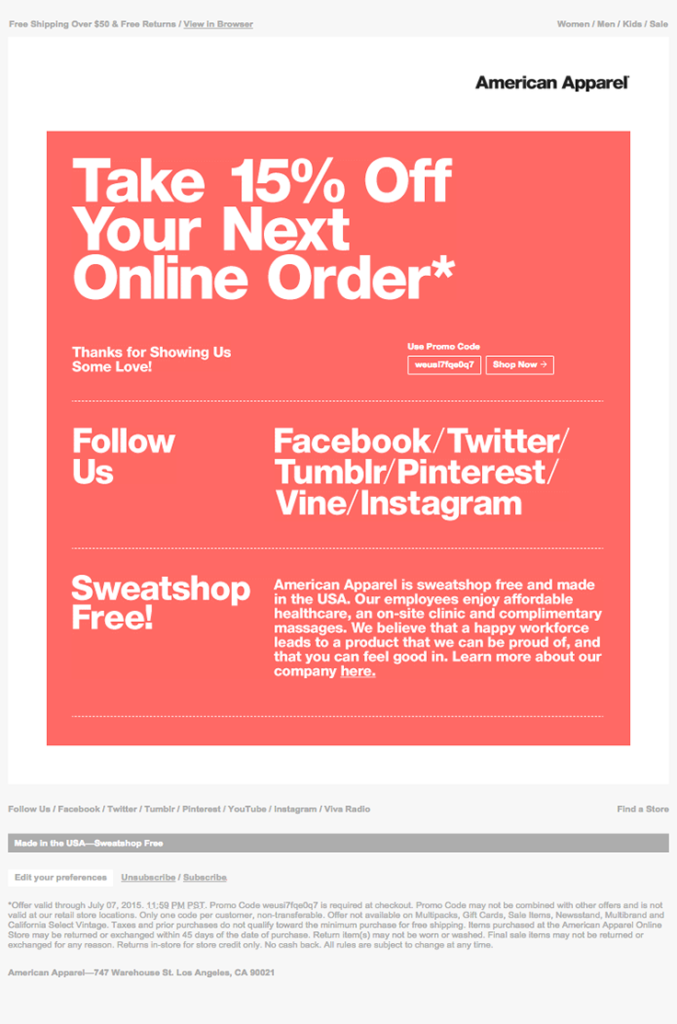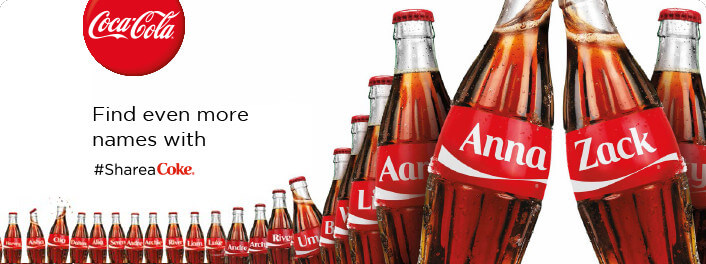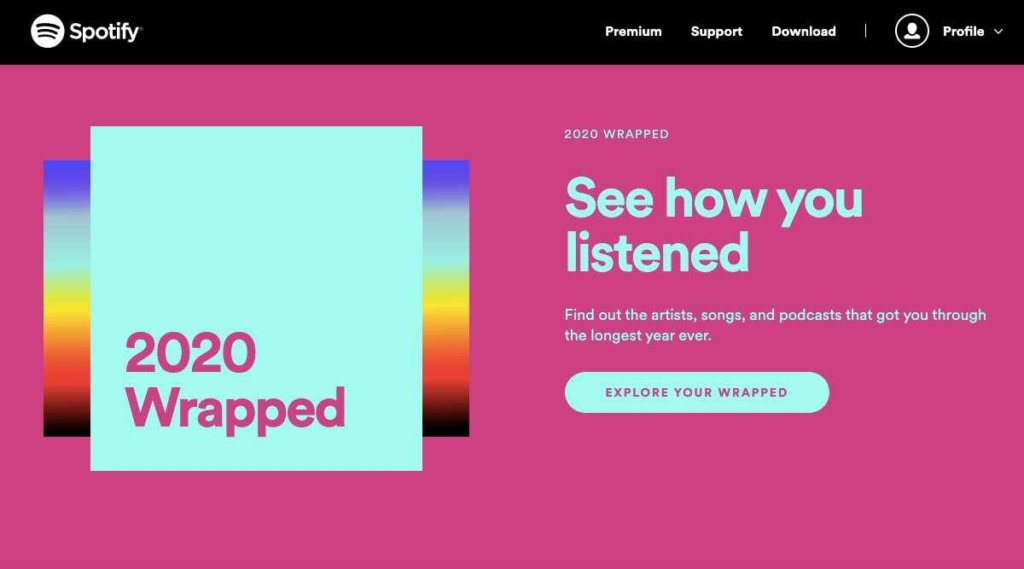A Strata YouTube Channel Original
Creating a personally relevant multichannel campaign can be difficult without proper preparation and guidance. Luckily, in this blog, featuring our most recent YouTube video of our Multichannel Marketing series, we go over some marketing personalization statistics, how to create a personalized, cohesive, and seamlessly relevant journey across multiple channels, and ways to better know who your buyers are.
The key to starting is to understand who your audience is and their specific buyer journey. Once you collect this data, it’s time to personalize and make sure the content you’re putting in front of them is relevant.
Map Out Your Customer Journey
When creating the perfect multichannel campaign for your audience, take a look at who your buyers really are and then work backwards to figure out how they became a customer. What high-value acquisition channels did these customers use? Which customers have strong LTV (lifetime value)? Talk to your customer service team and your customers. Once you organize and map that out, you’ll have a much easier time figuring out where the problems are, and where objections are coming from. And finally, discover where customers dropped off in the funnel. Put all of this together, and you’ll have a clear look at the journey your customers take and how you can improve your connections with them.
Establish Your Data
When we say establish your data, we’re talking way more than first names and company names. While those are important – that’s not the personalization customers are looking for these days. You’ll want to start partnering with a company (or using software) that can help you gather info like real-time, on-site behavior, online and offline conversion history, geographic location, product affinities, and device activity. All of this will help you develop a strategy that’s consistent and relevant from one channel to the next.
Ultimately, there’s no one-size-fits-all personalized experience – that’s why customers crave it so much. To see what steps are next in establishing your personalized approach, click on the video below. You’ll hear our Marketing and Social Media Coordinator, Bridget, go through best practices. Or, if you’d like to discuss this concept with one of our multichannel experts, contact us today to get your next (or maybe even your first) multichannel campaign started.
To Keep an Eye on
As a marketing solutions company with lots of interest in innovation and change – we’re big on knowing what’s trending and what’s to come. 2021 was filled with a ton of new trends, some – because of changing times and innovation – others, because of big events and worldly occurrences. To stay ahead and prepare for the new year, we’ve looked into the top marketing trends – within design, print, and digital, to keep an eye out for in 2022.
2022 Design Trends
Visual Inclusion
Recent movements around the nation, and even the world, have sparked a broader portrayal of diversity and inclusion in visuals. When crafting your marketing, think about how you can show diverse people in a variety of ways – in your photography, graphics, and iconography. And, even more, think about including imagery of people that your target audience(s) can relate to.“The default for people icons and images are no longer white, male, and able-bodied. There is more representation from marginalized groups in marketing visuals.” The more open, inclusive, and inviting your marketing is, the more likely you’ll bring in a diverse range of interested (and trusting) customers.
Bold Backgrounds
Bold and bright backgrounds and backgrounds with patterns are on the rise. These types of backgrounds attract attention and stand out from the pack, among otherwise modern – and primarily dull, gray, or white – busy feeds and mailboxes. Try using a brighter, bolder background to stand out among other marketing materials. This tactic can be “quite stunning when paired with more simple typography or other design elements,”but, to make this trend work for you and your brand, “ensure that everything has a place and there’s good eye flow between elements.”
Unique & Fun Typography
The year 2022 will be all about typography that “breaks standards”, such as “one single letter…upside down, bigger or smaller, in a different font, or completely missing.” Forecasters expect “lettering that pushes the bounds of easy legibility, creating forms that are expressive in and of themselves.” This unique and rising design tactic can also make for more internationally understandable text and imagery that can be read from culture to culture.
Authentic Imagery
Authentic, realistic imagery that your audience can connect with is always important – but will be increasingly popular in 2022. People don’t want to see fake stock families and disingenuous product photos. They want to see real. “Even commercial photography is shifting to look more like snapshots for these projects” instead of planned, posed imagery. This tactic may be a little less polished and intentional, but it works, because it’s relatable. “More authentic imagery is not amateurish; it’s just a different style.” Yet, this doesn’t mean taking blurry or “thrown together” photos. It means shooting high-quality photography that’s just a bit more casual and realistic to real, day-to-day life.
2022 Digital Marketing Trends
Conversational Marketing
This will be a big one for 2022, as it’s already been on the rise for quite a few years. Why? People want to connect with, and relate to, real people. And, they want fairly immediate responses from those real people. Customers feel more connected with and trusting of companies that tell their story, as well as the stories of their products. They want to hear and see real life examples of what the product has and does, and what sets it apart.
A recent study found that 41.3% of consumers use conversational marketing tools before making purchases. “Unlike traditional strategies, this form of marketing is now available across multiple channels, allowing brands to meet customers on their terms: on the devices, platforms and time schedules that suit the customer best.”
Read more about customer communication and relatability, here.
Video Marketing
This trend isn’t new, and is likely to continue in popularity for the next 5-10 years. It’s no surprise to us (and likely not a surprise to you) that 61% of marketers see video as a “very important or extremely important” part of their marketing strategy. It’s a useful tactic not only because of its visual appeal and high rate of easily digestible content, but because it can be republished on several platforms, and cut and manipulated for repurposing. A recent study recorded that “84% of consumers have been convinced to purchase a product after watching a video.”
To read more on video marketing, click here.
Interactive Content
This year, there will be a noticeable marketing shift from “traditional text-based content toward dynamic, engaging content” like quizzes, augmented reality, polls, 360-degree videos, and more. These tools give customers a more memorable connection with both the product and the company, and get them involved with the brand – not just get them to see it. In fact, 91% of customers are interested in seeing more content they can interact with.
First-Party and Zero-Party Data
We’ve talked a bit about this topic before in a fairly recent blog post, and this trend is sure to skyrocket into 2022. This year, “first-party cookies will force marketers to be mindful of the data they collect and how they use it,” primarily because companies can now only use their own collected data. This also means that companies will need to be much more authentic and transparent with their customers. Along with first-party data, zero-party data – data given to a brand or company directly from the consumer, will also be a key focus. Some examples of ways to acquire this data are through surveys, forms, or email.
2022 Print Marketing Trends
Combining Print & Digital
This particular trend – we’re very well-versed in. Combining print and digital can do wonders for your campaigns, meeting your customers with mulitple touches on and offline. A great example of this combination is using a personalized URL and QR code on a printed piece. QR codes on print marketing not only give customers an easy way to get to know your company better, but can be vehicles to get customers to purchase or sign up for a program – immediately. These types of combination tactics are flexible, dynamic, and cater to many differing age groups.
Creative Customer Personalization
Also, a great online or offline tool? Personalization. When your company caters to a specific type of audience, or even specific customers rather than a blanketed group, you’re more likely to meet customer’s needs and turn them into loyal ones. Additionally, personalization can be cost effective. Why’s this? In order to personalize, you can’t target everyone – just the right ones.
Direct Mail
Lastly, not a new or surprising trend to us, direct mail will continue to grow in popularity in 2022. “With the content marketing boom and remote working becoming the new normal, many consumers have become ‘numb’ to digital marketing campaigns.” So, if you haven’t, why not give direct mail marketing a go? Trying out this re-emerging marketing trend could bring a ton of new customers to your site, as 70% of people engage with a brand online after receiving their direct mail.
Read more on why direct mail is so impactful, here.
Interested in ramping up your marketing in 2022 using one or more of these solutions? We can help! Contact the experts at Strata, today.
And Where & How to Use Them
There’s a lot of bad marketing circulating around out there – and you know what all of it has in common (besides – likely – poor design, lack of target market research, and missing call-to-actions)? Unpleasant imagery. We know what you’re thinking… “photography costs a fortune!” – but that’s not always the case. And, what costs even more than any photo is losing customers over a bad one. There are ways to use good photography on your marketing without breaking the bank. Today, we’re going to explain why photography is so important for your company’s marketing, how you can get and use good photos, and, if need be – tips for (carefully and creatively) shooting your own.
Why Quality Photography is Important
Like we said above, losing customers to a bad photo or photos can be very costly. A not-so-great photo can make or break any marketing piece or campaign and deter customers from ever contacting your company. Visuals are a huge part of what we choose to purchase and where it’s from. When advertising with only speech or text, customers only remember 10% of what they see or hear, but, when advertising with imagery, they remember an impressive 65%. Quality photos appeal to customer emotions, and are intended to trigger specific thoughts and feelings. So, make sure your imagery is eye-catching, impactful, relevant, informative, and realistic.
The right photos can be used in several areas – from postcards and flyers, to social posts and website banners. And it’s not like you can only use a great photo once. So, if you think about all the places a good photo can go, it’s worth the investment to get it.
Lastly, photography is a universal language – so no matter who’s seeing them, if your photos are informative and well-shot, potential customers will be able to understand and relate to the intended message, whether they speak English, Spanish, or Japanese. It’s best to think of photography as one of your main points of communication with your customers, because, well…it really is. Sometimes, it’s the first form of communication they get from your company altogether.
How to Obtain Quality Photos & Use Them in Your Marketing
If you’re not taking your own photos or utilizing a professional photographer, there are a ton of options out there to get great photography at varying prices. Websites like Pexels, Unsplash, Freepik, and Pixabay provide decent, royalty-free, commercial-use stock images – free of cost. But, make sure to use these wisely and always check the fine print. Some photography sites will want you to give credit to the photographer in some way, or use the image only under certain circumstances.
If you’re willing to pay a bit more for higher marketing ROI, stock photo packages can be purchased on sites like GettyImages, Shutterstock, Adobe Stock, and others. You have the option to purchase a few individual photos – but that can get costly. We’d recommend going with one of the free sites above, or, if you have more photo needs, getting a plan that, for example, gives you 10 photos a month at a lower package price.
If you do hire a photographer, you have a leg up on other companies. Why? Because experienced photographers know what to look for when it comes to selling products. They have an eye for detail, know when it’s best to add something or take something out of the frame, and can edit your photos to perfection.
With a professional photographer, we’d recommend a one-time photoshoot (if possible) to cut costs and photograph all of the things you’re hoping to capture – whether that’s your whole staff and office, your product catalog, or an event. We’d also suggest really planning ahead – not only to tidy up the area and make your subject look great, but to make sure you photograph everything you need to, and that you don’t run over-time.
If You Have to Take Your Own Photos, Here’s How…
It’s not the end of the world to have to take your own photos, since, these days, almost everyone has a mini professional camera right in their pocket. But just because we have better cameras doesn’t mean we have the skills of an experienced, well-versed photographer, or know the best settings and angles to get the best shot. Yet, with a bit of research and effort, we can take some great product photos that will do the trick. Here are some best practices to keep in mind when photographing your offerings:
Camera Awareness: You don’t have to read a manual to get to know whatever camera you’re working with, but, the more expensive and intricate the camera, the more time you should take to practice your skills. Have a bit of fun and experiment before doing an actual photoshoot with your products. Make sure you understand the effects and settings available to you and what will present your products best.
Camera Angle: There are a ton of ways to take your photos, but where you place the camera will help you tell whatever story you’re trying to get across. So, think about what makes your product look eye-catching and unique, and how it can best be framed to show its qualities. Avoid angles with too much slant, that are too close up, or that blur the wrong areas.
Detail: Before taking your photo, take note of the little things. Is the area clean to emphasize the product or focus? Does the subject look its best? Is the photo realistic?
Background: Almost always, you’ll want your subject’s background to be neutral and not in focus. There are exceptions to this rule, but it’s the safest bet to make sure your subject is in focus and is the center of attention. If your office is bright and colorful, it’s okay to have that as the background for staff photos. Just make sure it’s not so busy that it’s distracting from the subject.
Color & Lighting: When adding objects around your subject or creating some sort of background, make sure the color of your focus pops. If need be, make some color edits to your photography using Photoshop, Lightroom, VSCO, or a similar photo editing platform. But – don’t go crazy. Keep your photo looking realistic and authentic. Additionally, take note of the lighting. Feel free to get fancy and purchase professional lighting – but there’s often no need to. Natural lighting can produce great outcomes when it comes to photography.
Context & Scale: Especially for product photography, it’s always important to offer a sense of scale and context. Instead of only showing the subject on a white background, also show the product in a room, on a table, next to a person, or even being used by a person. This will help people “fill in the gaps” and understand the sizing of the product.
File Size: Pay attention to the sizes of your photos when taking them and uploading them. Make sure they’re not too small that they look blurry and pixelated, but also be sure that they’re not so large that they affect load times and user experience.
Authenticity: We’ve already brushed the surface on this one – but it’s so important that it can’t be said too many times. Make sure your photography’s an accurate, authentic depiction of your offerings. There’s nothing worse than getting excited over a product you see online, only to be disappointed by its appearance upon purchasing.
Need help finding the perfect photo, or ready to take these practices and put them into great, effective marketing? Contact Strata.
A Strata YouTube Channel Original
In this ever-changing market, not even a marketing genius can accurately gauge performance of a multichannel campaign without organized, analyzed data across channels. That is why setting and tracking key performance indicators (KPIs) is very important. Follow along as we walk you through a few things to keep in mind when establishing and understanding KPI’s for your multichannel campaign.
What’s a KPI?
Like we said above, KPI stands for key performance indicator. It’s a quantifiable measure of performance over time for a specific goal. In this case – that goal is multichannel marketing success. KPIs lay out marketing goals in the form of specific milestones to calculate progress and insights, and these insights help marketers make better decisions. In order for KPIs to be successful and helpful, a marketer or team of marketers needs to handle and record analytics from several touch-points. Without KPIs there’s no way to accurately and effectively measure the efficiency of your multichannel performance.
KPIs at Their Core: Layer One
There are two levels of KPIs for multichannel campaigns. The first layer is the component layer, and it’s used to analyze the individual components of a campaign. This layer helps establish realistic goals for the campaign and provides low level insight to analyze and optimize as your campaign progresses. Conversion rates vary by standards like industry and medium, which are easily researchable.
Yet, actual conversion rates have huge ranges based on the nature of your call to action – like your messaging, imagery, and your audience, and which segment of the funnel they’re in. If your campaign’s messaging can be considered “industry standard”, save yourself some time and use an average conversion rate, even if it looks low.
Further into KPIs: Layer Two
Want to learn about the second layer of KPIs, and how to establish them for your next multichannel campaign? Click on the video below and hear more from our Director of R&D, Harrison. Or, if you’d like to discuss this concept with one of our multichannel experts, contact us today to get your next (or maybe your first) multichannel campaign started.
What’s the Real Deal?
There’s a ton of information out there about multichannel marketing – and it can be hard to sift through. You probably often find yourself wondering, what’s real, and what’s myth? You’re not alone. Many marketers end up hindering their own multichannel efforts by believing a lot of these circulated misunderstandings, but with our help, you don’t have to. Today, we’re looking at three of the most common misconceptions around multichannel marketing, and – as experts in the area, letting you in on the real deal.
Myth 1: Multichannel Marketing is “Too Expensive”
There are a ton of marketers and organizations out there that have yet to try or implement multichannel marketing because it’s “too expensive” or “over budget”. It may cost slightly more than your generic, on-touch marketing, but it’s important to consider the benefits and weigh the cost versus the potential (and often guaranteed) ROI. There’s proof out there that many businesses end up getting much greater ROI from multichannel marketing, making the price worth it. Plus, it’s estimated that companies with optimal multichannel campaigns experience “customer retention rates of 89%, compared to an average of 33% for those businesses with weak multichannel engagement”. It’s all about how you use your budget, and allotting it to the marketing practices and programs that will yield the highest return.
Myth 2: Multichannel Solutions “Benefit Only the Customer”
It’s a common misconception that multichannel marketing is great for meeting customers at many touchpoints, but that it’s overwhelming and inconclusive for the company using it. This could not be further from the truth. Multichannel marketing is not just a one-touch process, and that’s what makes it unique and effective. Although it may seem like a lot at first (engaging with customers on several platforms such as direct mail, social, and website) it’ll be extremely helpful in forecasting and planning a company’s marketing strategy in the long run. Multichannel marketing benefits customers by providing them with relevant, personable, and consistent content, but also benefits your company by building brand awareness, loyalty, and trust within consumers and by compiling data and analytics for a complete picture of your audience’s customer journey.
Like we said, it may seem like a lot at first, but over time, you’ll get a clear picture of what channels and touchpoints work best for your company and reach the most customers, what channels and touchpoints don’t, and where and when it’s best to reach your target audience(s).
Additionally, multichannel marketing helps your employees improve customer service and build more personal and personalized relationships with customers. For example, while communicating with a customer at a certain touchpoint, your customer service representative can see exactly what contact points the customer has already accessed, as well as the information they’ve received or provided to your company. This relationship that multichannel marketing fosters not only creates less frustration and unawareness for the customer – but for the company as well. In turn, multichannel marketing reduces staff turnover, and ensures that you keep your most talented employees. It can also reduce staff errors and build a better brand reputation for your company as a whole
Myth 3: Multichannel Marketing is “Hard to Implement”
We’ve heard this one a lot. “Multichannel marketing is so involved,” or “I just don’t have time for all that.” Here’s the thing…multichannel marketing is only as hard as you make it. There are a lot of channels out there to reach your potential customers (website, in-store, catalog, e-mail, TV, text, blog, mail…the list goes on), but that doesn’t mean you have to use all of them. Plus, if you stick with your brand standards and ensure all of your touchpoints are connected and unified, you can use similar (if not the same) content, design, colors, and calls-to-action across channels, making the process much easier.
The best way to get started without getting overwhelmed is to create a plan. A great trick for quick planning is “RACE”; Reach, Act, Convert, and Engage. Make sure you’re hitting all of these parts of the process to ensure you’re connecting with and converting your audience, and getting the most out of your multichannel marketing.
Lastly, if you still feel you’re in over your head, or just really want to focus on other parts of your business, don’t hesitate to partner with experienced multichannel marketing experts. Research who you want to partner with so that you’re aware of what to expect and what they’ll expect from you in terms of budgets, end goals, and experience levels.
We hope we’ve eliminated some of your worries, answered some of your questions, and provided you with a bit of confidence in multichannel marketing. To get started on your next (or maybe your first) multichannel campaign, or learn more about how we can help, feel free to contact us.
Looking for more information on multichannel marketing and how to effectively launch a campaign? Visit our YouTube channel for quick tips and tricks from the experts at Strata.
How to Fight it & Flourish
As spooky season approaches and Halloween is around the corner, we’re thinking a lot about our biggest fears. But today we’re not talking about ghosts or goblins or even Michael Myers. We’re talking about one of the scariest things of all to any workplace…complacency.
“Complacency is man’s biggest weakness. It creeps up on us when we least expect it.” – Jay Mullings
Even if you think your company isn’t anywhere near complacency, there’s still always room to evaluate and grow. And, you may be surprised by what’s lurking behind the door of contentment. Complacency is not only bad for your company, but good for your competition, which we’d assume will give you a bit of a fright. If employees aren’t challenged to improve, things are the way they are because it’s the “way they’ve always been”, and the company isn’t growing, it’s definitely affecting your revenue. But don’t worry – it’s never too late to change. In this blog, we’ll take a look at the best ways to avoid company complacency and ensure you’re periodically updating and enhancing your culture, practices, and marketing.
Complacency’s Cause
Complacency can sneak up on any company without warning, shielding it from growth and stifling creativity and innovation. Why? Because if companies are seemingly doing “fine” and meeting their goals on paper, they feel no “need” or urgency to change. That’s where the biggest mistake is made, because companies should always be looking to evolve and thinking about their vision for the future. If not, ideas become stale, talent becomes bored, and eventually, the company comes to a jarring halt without any clue of how they got there.
When everything seems to be going well, it can be difficult to disrupt successes. And it may feel like the right decision to let processes and practices take their course rather than think about next steps and development, but often “the riskiest thing we can do is just maintain the status quo.” Without urgency and consistency for change, employee performance shifts and can even decline. Statistics show that only 30% of employees in America are actually engaged in their work, and only 13% of employees worldwide are engaged in their office environment. With such low numbers already, it’s so important to keep employees excited, energized, and motivated for what they’re doing and what’s to come.
Combatting Complacency
With complacency being a bigger, scarier possibility than you may have assumed, it’s important to keep it top of mind and to make sure you’re doing your best to combat it. Start with communication of your company’s mission, vision, and values. Make sure they’re clear, known, and maybe most importantly – accurate and true. Know who you are. If you do – your employees will too, and in turn they’ll feel more connected with and motivated by your workplace. Allow employees to see their contributions to the bigger mission, and their worth as an asset to the overarching vision.
After all, having a good (and growing) company culture is key to combatting complacency and ensuring workplace satisfaction. How do you improve your culture? Many ways, but the most effective tools are company newsletters, employee highlights, group meetings, and employee appreciation. Again – make your employees feel valued, and they’ll more likely provide value.
Additionally, make sure team members feel important and part of the greater whole. Encourage managers and team members to communicate within their individual teams, and make sure responsibilities are delegated and well distributed. Employees are more likely to become bored when they’re doing the same tasks over and over, so give them room to be creative and explore new opportunities. You never know who may have the next best idea.
Lastly, be prepared for whatever may come your company’s way, and never be too afraid to challenge the status quo. If we’ve learned anything these past two years, it’s that anything can happen, and that the saying “it won’t happen to us” is just not realistic. It’s important to listen to the ideas of your employees and always be prepared for what’s to come with an open communication structure. Make sure you have multiple decision makers, not just one, and that employees feel comfortable enough to make some decisions without “permission” from a leader. Training your employees to make decisions on their own will be a key factor in combatting complacency.
Refreshing Without Fear
Almost as important as your workplace and its people is your brand and marketing. Without change and evolution, your marketing can quickly become out-of-date right under your nose (causing your employees to lack company pride and your audience to lose interest). But how do you know when it’s the right time to update your brand and marketing?
A sure sign (these days) of lack luster marketing is an absence of social platforms. Some would even say if you’re not online, you might as well not exist. And although we think that sounds a little spooky, we’ll admit that it holds some truth. If you’re hard to find and not posting relevant content and imagery, target customers may be choosing your competitors (who are more accessible and approachable) over you.
Also important to your brand and its relevance is your website. In this day and age, it’s very easy to tell when a website has been left alone so long that it’s developing cob-webs. If you’re finding that your website traffic is down and your customers aren’t interacting with it, it’s time for an upgrade. But, before any big changes, compile data and make purposeful decisions. What is your audience looking for? What do they respond well too? How can you quickly and easily get them to have interest in your company and purchase goods?
Additionally, make sure you keep your advertising and customer communication – whether digital or physical – energized and creative. Combine direct and digital marketing to reach specific audiences and keep your brand top of mind. Don’t settle for just one medium that “seems to be working” if multiple channels of communication could bring you more success.
Lastly, avoid complacency by focusing on helping the customer rather than selling to them. While the overall goal of most companies is to generate sales, it’s essential you show your customers that you care about their pain points and needs. To see all of these tactics in action, check out our recent blog on how to create successful marketing campaigns.
Company complacency can sneak up on you like a ghost in the night and lead to missed opportunities, poor customer service, and disengaged employees. Stay aware of the possibility of contentment and make sure you’re always exploring, evolving, and rising above the rest. Change is inevitable, but complacency doesn’t have to be.
For more information on what we do at Strata and how we can help you fight complacency with one of our marketing solutions, contact us today.
Not Our First Rodeo
Even though this wasn’t our first rodeo, SHSMD Connections 2021 didn’t disappoint. We had great conversations with so many show-goers, and we got to do one of our favorite things – talk new mover marketing.
In previous years, SHSMD Connections has brought quite the large crowd. Yet, with the needed precautions due to COVID-19, this year’s show created a much smaller, more intimate setting. Although we weren’t sure how the event would pan out, the smaller turnout gave Strata the chance to really chat with others in the industry, and learn more about the needs and wants of healthcare marketers.
About the Show & Our Experience
This year, two of our employees attended the conference in San Antonio, Texas from September 19-21. With Strata’s booth being front and center as guests entered the exhibit hall, our exposure was unmatched, giving us many great moments for conversation. Our bright orange and yellow (recently refreshed) colors kept the atmosphere light and fun, making it easy for the team to meet as many new contacts as possible while also connecting with familiar faces.


We’re really looking forward to seeing, post-show, how these connections flourish and how we can help healthcare marketers and others within the industry with their new mover marketing endeavors.
Our Takeaways
Our presentation of SmartMove and all that we offer was a huge success, and the feedback we were given emphasized the significant need for our services. Healthcare facilities aren’t just looking for direct marketing, but direct marketing that will make an impact and target the right people at the right time. Whether attendees were familiar with new mover marketing or not, our team educated them on Strata’s personalized touch and efficient processes.
But, not only did Strata come prepared to share our services – but prepared and excited to learn! On their breaks, the Strata team attended numerous breakout sessions and learned about everything from inclusion and diversity in the workplace, to problem solving, engagement, and leadership strategies. They even had the chance to hear from Burl Stamp, President and Founder of Stamp & Chase, who discussed how to properly and effectively engage with and lead teams, customers, and communities (especially post pandemic).


Another great session that the team partook in was Derreck Kayongo’s keynote. Derreck presented on the topic of company culture and how to tackle the subject of company diversity head on, by sharing stories of his own childhood to his own organization, the Global Soap Project. Derreck did a phenomenal job guiding the audience through diversity and inclusion problems, and how they impact the corporate bottom line. He left the crowd speechless. The team was incredibly grateful to have attended and listened in on such impactful conversations, and are so excited to not only come back with some new connections, but with takeaways to strengthen Strata’s services and culture.
Our Final Thoughts
Overall, SHSMD 2021 was a success for Strata. While it may not have looked like conferences of years past, we’re glad our team had great conversations and made solid connections with those that could attend. Not to mention, our promo items were a hit! See you next year, SHSMD!
Didn’t get to swing by and meet us at the show? Contact us today to see how we can help!
A Look at Some of Our Favorite Customer-Focused Campaigns
Although we could write several blogs about all the great marketing campaigns that inspire and motivate us to be the best marketers possible and make the most effective material – in this blog, we’re looking at a few that we really admire because of how relatable and real they are. We’ll be breaking them down, thinking through what made them so successful, and in turn – helping you brainstorm your next campaign. Follow along as we dive into these customer-centric campaign leaders.
Apple’s #ShotoniPhone Campaign

No matter where you’re located – you’ve likely seen this one around town. On billboards, buses, signs, or online. iPhone and Apple’s popularity is pretty known, but what we didn’t know when the iPhone first became popular was that it would eventually completely replace the digital camera. And that’s what this campaign shows; that you can take photos with your iPhone that are as beautiful as a camera that would cost you thousands. That’s great and all, but that alone would not convince people of today. So, why’s this campaign so successful? It gets real people involved. It’s relatable. The photos are not only from real Apple customers – but include their names. If someone wanted to, they could look up the name of the person in the bottom corner associated with taking the photo and learn more about who that person is. The best part? Not all of these people are photographers, showing that anyone could use the iPhone to take great photos. This tactic is pretty genius and builds trust – as no one would really care if it was simply a generic photo that easily could have been taken on a Canon. “According to various studies, over half (51%) of Americans trust user-generated content more than other information on a company website and claim that it influences what they buy and where they buy it from.”
Coors Light’s #CouldUseABeer Campaign

Another campaign that spoke to the general public and got them involved during a difficult time? Coors Light’s #CouldUseABeer. After a photo of a quarantined, 93-year-old woman asking for a beer went viral, Coors Light engaged with its audience by offering free six packs to anyone who was tweeted about (who – you guessed it, could use a beer). This tactic of giving away free items may seem pretty crazy, but it can go a long way. Although Coors Light gave away over 500,000 beers, their name was tweeted about again and again, which led them to trend, and boosted their reputation in a time of need.
American Apparel’s Direct Email Marketing

Known for being trendy and modern, American Apparel is no stranger to effective, up-to-date, customer-centric marketing. We’re specifically impressed with their to-the-point email marketing. No frills, no fluff – just what the customer wants (sales, discounts, and freebies). American Apparel always ensures that there’s no guesswork for their customers. Simple and sleek, their emails are call-to-action forward without being in-your-face.
Mercedes’ “Like You” Campaign

How do you relate a high-end brand to a broader audience of customers? Relate it to them, literally. Mercedes’ “Like You” campaign did just that. Called to several different types of audiences with phrases like, “Detail-obsessed, like you”, “Groundbreaking, like you”, “Original, like you” and “Curious, like you”. And not only was this phrasing compelling, but consistent. For the span of the campaign, potential customers could find the phrasing on billboards, signs, online ads, and on tv. The consistency was key, in that potential customers began to associate themselves with the brand and possibly even buy a Mercedes.
Airbnb’s Use of User Generated Content

Similar to Apple’s tactic, Airbnb uses the photos, videos, and feedback of its customers in its campaigns to promote beautifully classic or uniquely interesting places to stay. “Millennials spend 30% of their media time (5 hours/day) engaged with user-generated content (UGC). Coincidently, this is the same generation that drives Airbnb’s success in the sharing economy.” Airbnb keeps things personal and personalized by including its audience, which facilitates a happy and loyal community of customers.
Coca Cola’s Share a Coke Multichannel Campaign

We all know this one. There’s nothing more personal than having your own name on a Coke bottle – which is exactly what Coca Cola did for its ongoing “Share a Coke” campaign. Whether you customize your bottle or simply find your name in store, you’re likely to share it with the world through text, email, on social, you name it (no pun intended)! And its rollout in 2011 sure worked in building brand awareness, boosting sales, and creating positive brand recognition, as “Young adult consumption increased significantly during the campaign, up by 7%, making 2011 the most successful summer ever. The campaign earned a total of 18,300,000-plus media impressions.”
Spotify’s #2020Wrapped Campaign

If you have any form of social media, you’ll likely remember this campaign flooding your feed, and maybe you even took part in it. At the end of 2020, Spotify allowed its customers to see their year of music with “2020 Wrapped”, which compiled their listening into a lovely array of photos and stats. Viewers loved seeing their personal data compiled into a nicely packaged marketing piece – and loved sharing their interests with others. Smart on Spotify’s end, because it not only gave them free marketing, but boosted their recognition.
So, What Have We Learned?
If you haven’t noticed, most of these campaigns share one key factor; relatability. How can you use relatability to create effective campaigns, too? Know your audience. Before even starting to brainstorm a campaign, make sure you’re fully aware of who, where, and when you’re targeting. And when you do start your campaign based off your findings, use that data and understanding to carefully craft consistent messaging that includes clear call-to-actions and personalized, catered content. Use hashtags, giveaways, QR codes, PURLs, BRCs, and more to engage with your audience and include them in your campaign. And, when and if appropriate, sprinkle in some humor.
Interested in making an impactful, relatable campaign that can help boost your company’s marketing efforts? Not sure exactly where to start? Look no further. Strata’s here to help. Contact us today to get the brainstorming started.
Let’s Get Ethical
Marketing ethics has always been a never-ending conversation, especially considering the ongoing changes in our technology and the way we market. Today, we’re talking about ways your business can promote ethical marketing, and how to apply these practices in your next campaign while navigating through the Information age.
Advancements in Ethical Marketing
At first glance, marketing ethics can come off as simple – often viewed as just being honest with your advertisements and not promoting scams. But with the integration of digital marketing, there are much more complex, ethically charged dilemmas at hand that marketers come across on a day-to-day basis. If handled incorrectly, these dilemmas can hurt your brand’s reputation and cost you customers. Recent surveys show that 35% of consumers have stopped buying from brands they perceive as unethical, even if there’s no substitute available. That said, there are many approaches your company can take to tackle these ethical dilemmas and promote brand integrity.
Here are some common ethical dilemmas of the information age:
Data Ethics
How you obtain and use your data is everything when it comes to marketing tactics and campaigns. Surveys show that around 1 in 4 employees are uncomfortable with not only how their companies buy their data, but how they use it. This leads to the conversation of data ethics and establishing goals within your company to promote ethical data use. Data goals look different for every company in terms of tracking, reporting, and level of controls. This requires internal transparency and accountability, as there aren’t clear universal rules. A good start is to design your programs from the start to be transparent, for everyone in the company, and for consumers. There should also be equal expectations for data usage with your partners, suppliers, and publishers.
Privacy & Transparency
Privacy is another concern that’s always on consumers’ minds, and we can’t talk about its standards and rules without mentioning the General Data Protection Regulation (GDPR). The GDPR is by far the most comprehensive set of data protection regulations in the entire world, and provides clear digital marketing guidelines on consent, data transfers, breach reporting requirements, and limits on automated data processing. While 47% of people say they have greater trust in companies because of GDPR improvements, providing security to ensure your consumers’ data is not at risk should always be a priority. Since 84% of customers say they’re more loyal to companies with strong security controls – it’s safe to say (no pun intended) that an extra security spend is worth the cost. Ultimately, privacy boils down to being transparent with your consumers while keeping their data and information confidential.
Ethical Targeting
Advancements in digital marketing have enabled marketers to target their advertising campaigns around specific user data and demographics, which can lead to several different ethical dilemmas. The American Marketing Association spoke about these targeting issues best, by saying, “While there are some good ways to target by group, targeting or excluding by race, sex, sexual orientation or other immutable traits is largely ineffective and, at worst, unethical.” This leads to the concept of ethical target marketing, where companies will research consumers to see what ways an individual might purchase a product without taking advantage of their information. While companies can advertise to certain groups, there needs to be an emphasis on making sure the message isn’t offensive or discriminatory.
Honoring & Upholding Commitments
This may come off as obvious, but it’s important to place integrity on your company’s end when marketing a product or service. Make sure your commitments within marketing statements are both upheld and correct, and that you’re actively deleting loopholes within your advertisements and contracts. Then, ensure that all content presented is not misleading and easy to follow. Provide complete information on product features or service specifications.
We know there are a ton of moving parts when it comes to marketing ethics – and it can be overwhelming. That’s okay. At the end of the day, what’s most important is putting your consumer’s needs, privacy, and safety first – and letting everything else fall into place.
Feeling informed and motived? Contact us today to learn more about how we can take your next (ethical) marketing campaign to a whole new level.



